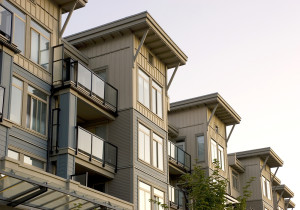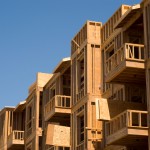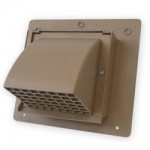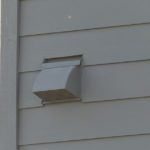
As Ontario builders prepare for the opportunity to create wood-frame six-storey mid-rises, building envelopes should be carefully considered and protected.Starting next year, the province will join B.C. by allowing taller wood structures in its building code. Wood has proven to be a safe and reliable material in these applications, but protecting that wood framing will prove vital for any construction professional.
One of the main enemies of wood frame construction is water. If it enters a wall and cannot escape, it can trigger rot and mold issues. Health problems for occupants and significant structural damage can be the result. British Columbia has already found the solution, requiring rainscreens to be included in all buildings facing the challenges of its wet, coastal climates.
Those changes to the building code came after the province’s leaky condo disaster of the 1980s and 1990s, which saw thousands of condo units damaged, requiring $3-billion to $4-billion in repairs. Walls that were supposed to be sealed, eventually allowed water behind them, with no way for it to dry out.
In contrast, a rainscreened wall is designed with the expectation that some moisture will get behind the siding, and it needs space to drain, or evaporate.
While mandatory across much of B.C., installing a rainscreen will be up to the builder in Ontario mid-rise construction. A rainscreen relies on a sealed membrane beneath the siding to keep water out of a wall. The gap created between the building envelope and the siding will allow moisture to harmlessly dissipate.
The key to long-term success is ensuring all of your materials work together to maintain the seal of your building envelope. That includes your choice of vent located at the termination point between the HVAC ducting and the building envelope.
The right plastic vent will be carefully designed to shed water to the outside of a building. Rather than providing an opening for moisture to penetrate, a solid, one-piece design will eliminate risky seams. A good vent will also include a sizable flange, making it easy to create a tight seal with the rainscreen’s inner membrane.
If you are ready to build six-storeys out of wood, you should also be ready to ensure your structure will hold up over decades. Rainscreens are steadily gaining in popularity, and have proven their value over time.



